Abstract
A 2-h nonisotopic DNA probe assay for the direct detection of Neisseria gonorrhoeae in urogenital specimens has recently been modified (PACE 2; Gen-Probe, San Diego, Calif.). The new assay format was developed to increase the sensitivity of the assay and simplify procedural steps. In this study, the new DNA probe test was compared with a culture reference method for the detection of N. gonorrhoeae in endocervical specimens. The results of the DNA probe test were expressed as a ratio of relative light units (RLU) of the specimen/RLU of the cutoff recommended by the manufacturer. All patient samples with sample RLU/cutoff RLU ratios less than 0.7 were interpreted as negative, and ratios greater than 2.0 were interpreted as positive for gonorrhea. Samples with sample RLU/cutoff RLU ratios between 0.7 and 2.0 were repeated until two or more consistent negative or positive ratios were obtained. A total of 469 specimens were tested with an overall disease prevalence of 6.1%. Of the 469 patients tested, 5 specimens (1.0%) fell in this borderline region and were retested. If the manufacturer's recommended cutoff value had been used, the original DNA probe results would have resulted in two false-positives. Our data were analyzed for both symptomatic (prevalence, 11.7%) and asymptomatic (prevalence, 2%) women. The study indicated that with our modification of the manufacturer's endpoint interpretation, the DNA probe test was essentially equivalent to the culture method in terms of sensitivity, specificity, and positive and negative predictive values in both symptomatic and asymptomatic patient populations. The new DNA probe test can serve as a suitable screening and diagnostic test for the diagnosis of gonorrheal genital infections in women. Additionally, it offers the advantages of rapid turnaround time and ease of use and allows simultaneous testing for Chlamydia trachomatis on the same specimen.
Full text
PDF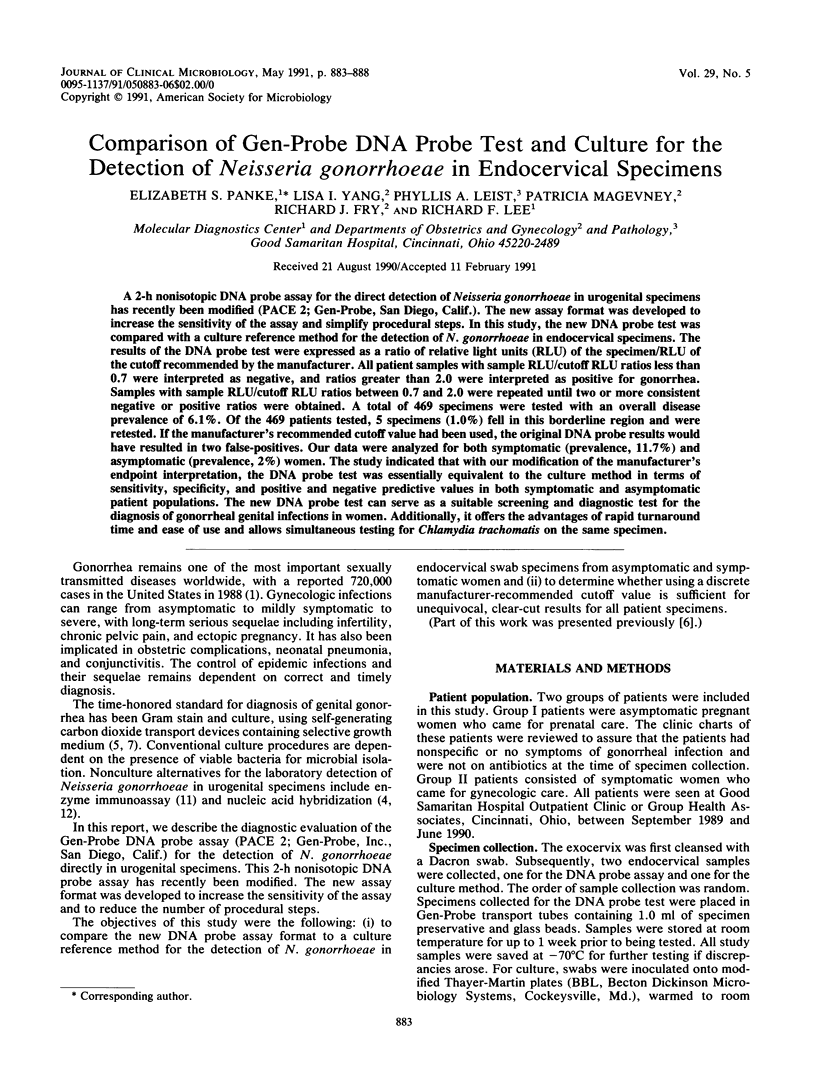
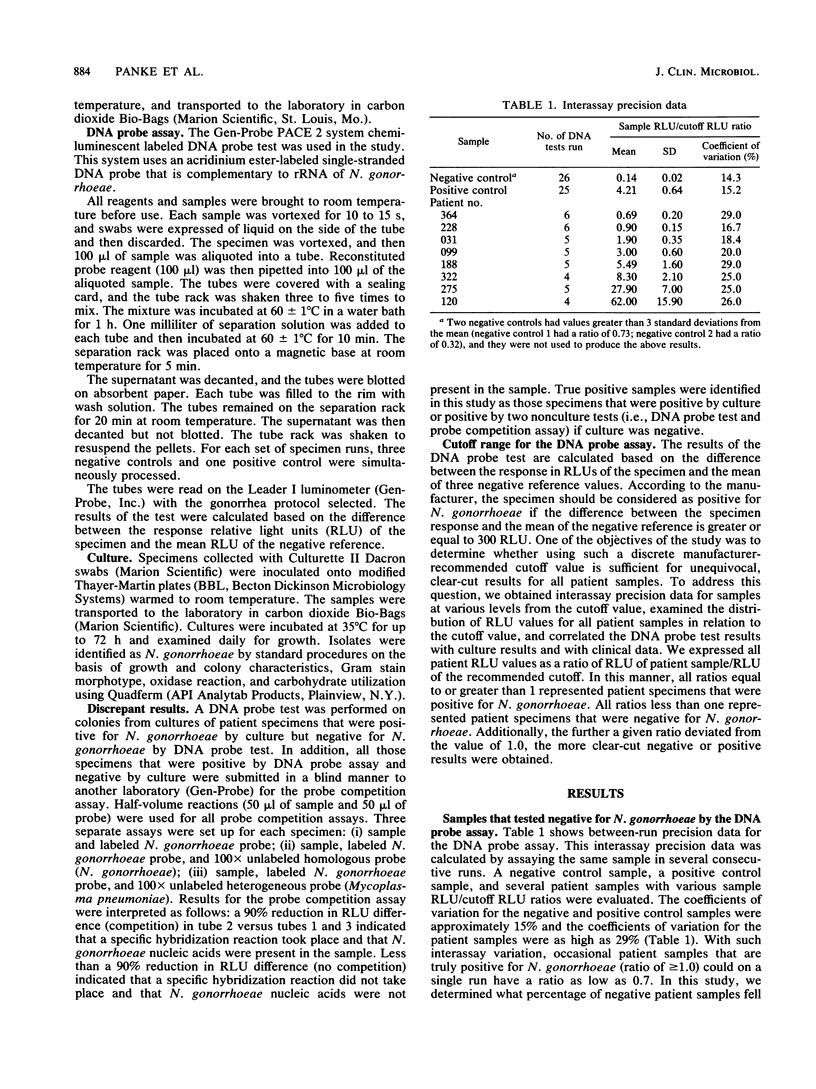
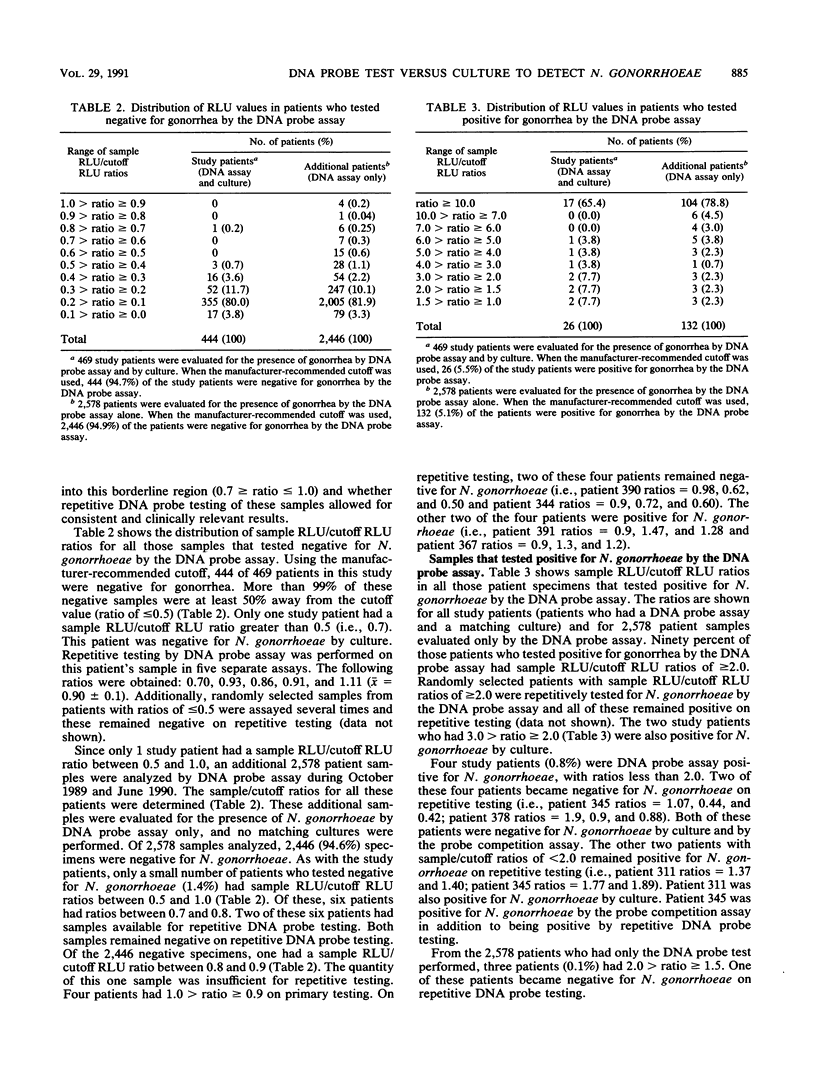

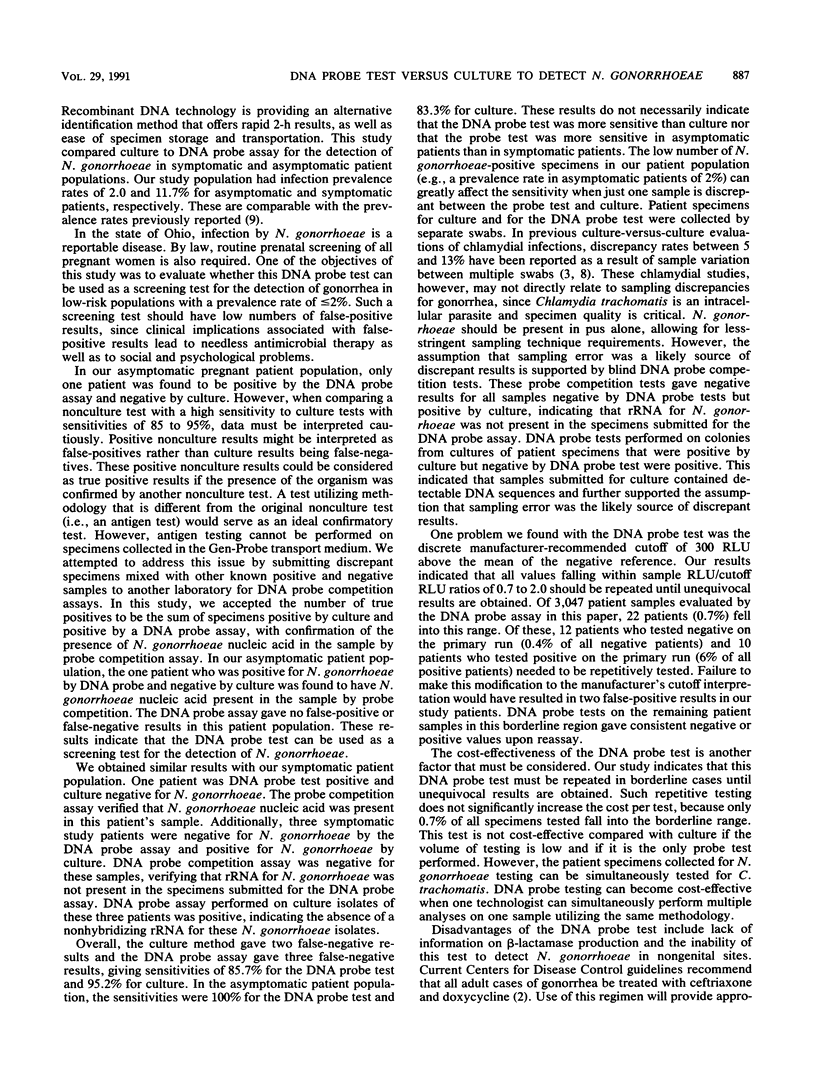
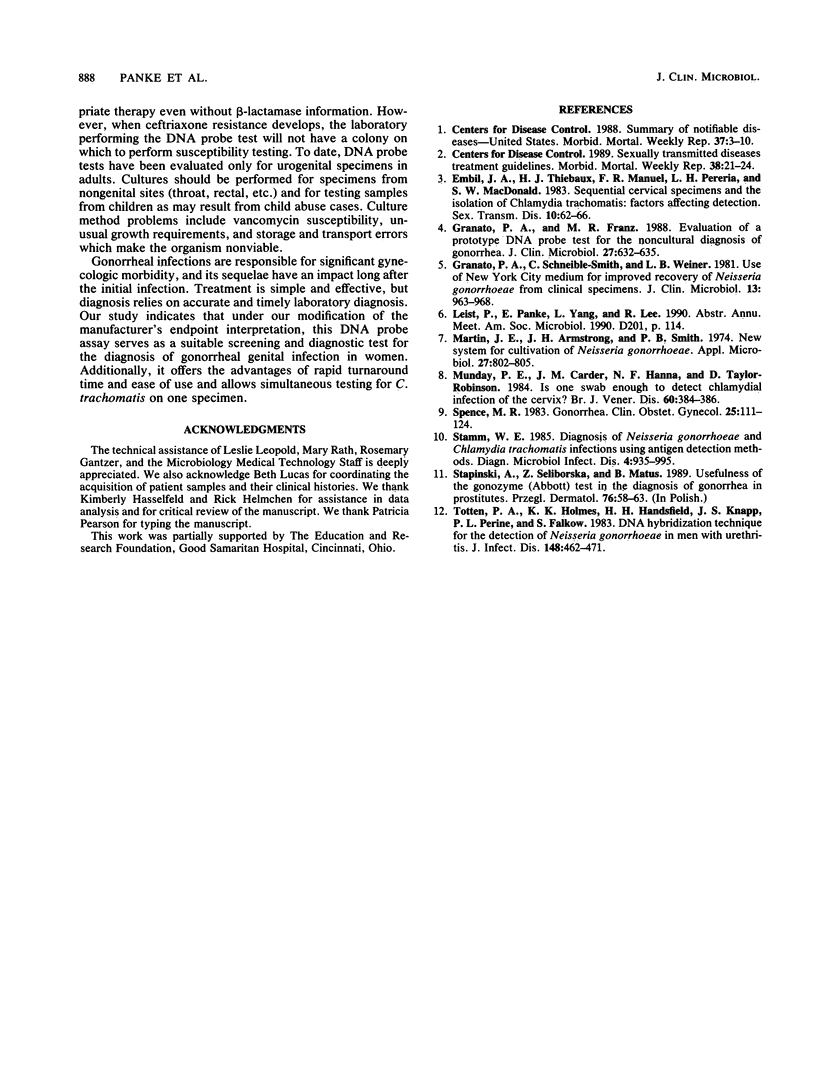
Selected References
These references are in PubMed. This may not be the complete list of references from this article.
- Embil J. A., Thiébaux H. J., Manuel F. R., Pereira L. H., MacDonald S. W. Sequential cervical specimens and the isolation of Chlamydia trachomatis: factors affecting detection. Sex Transm Dis. 1983 Apr-Jun;10(2):62–66. doi: 10.1097/00007435-198304000-00003. [DOI] [PubMed] [Google Scholar]
- Granato P. A., Franz M. R. Evaluation of a prototype DNA probe test for the noncultural diagnosis of gonorrhea. J Clin Microbiol. 1989 Apr;27(4):632–635. doi: 10.1128/jcm.27.4.632-635.1989. [DOI] [PMC free article] [PubMed] [Google Scholar]
- Granato P. A., Schneible-Smith C., Weiner L. B. Use of New York City medium for improved recovery of Neisseria gonorrhoeae from clinical specimens. J Clin Microbiol. 1981 May;13(5):963–968. doi: 10.1128/jcm.13.5.963-968.1981. [DOI] [PMC free article] [PubMed] [Google Scholar]
- Martin J. E., Armstrong J. H., Smith P. B. New system for cultivation of Neisseria gonorrhoeae. Appl Microbiol. 1974 Apr;27(4):802–805. doi: 10.1128/am.27.4.802-805.1974. [DOI] [PMC free article] [PubMed] [Google Scholar]
- Munday P. E., Carder J. M., Hanna N. F., Taylor-Robinson D. Is one swab enough to detect chlamydial infection of the cervix? Br J Vener Dis. 1984 Dec;60(6):384–386. doi: 10.1136/sti.60.6.384. [DOI] [PMC free article] [PubMed] [Google Scholar]
- Spence M. R. Gonorrhea. Clin Obstet Gynecol. 1983 Mar;26(1):111–124. doi: 10.1097/00003081-198303000-00016. [DOI] [PubMed] [Google Scholar]
- Stapiński A., Selibórska Z., Matus B. Przydatnoś testu gonozyme (Abbott) w rozpoznawaniu rzezaczki u prostytutek. Przegl Dermatol. 1989 Jan-Mar;76(1):58–63. [PubMed] [Google Scholar]
- Totten P. A., Holmes K. K., Handsfield H. H., Knapp J. S., Perine P. L., Falkow S. DNA hybridization technique for the detection of Neisseria gonorrhoeae in men with urethritis. J Infect Dis. 1983 Sep;148(3):462–471. doi: 10.1093/infdis/148.3.462. [DOI] [PubMed] [Google Scholar]


